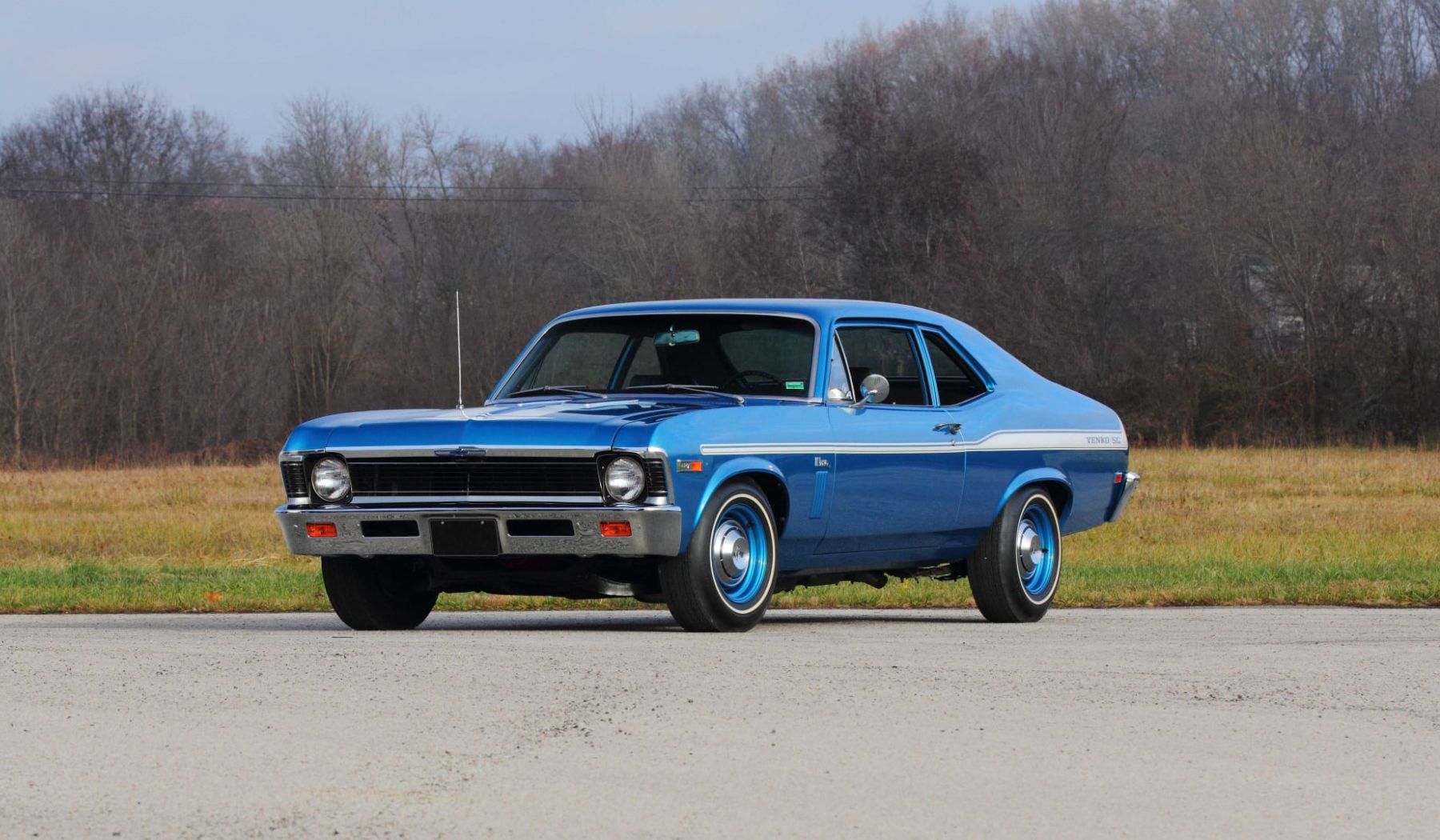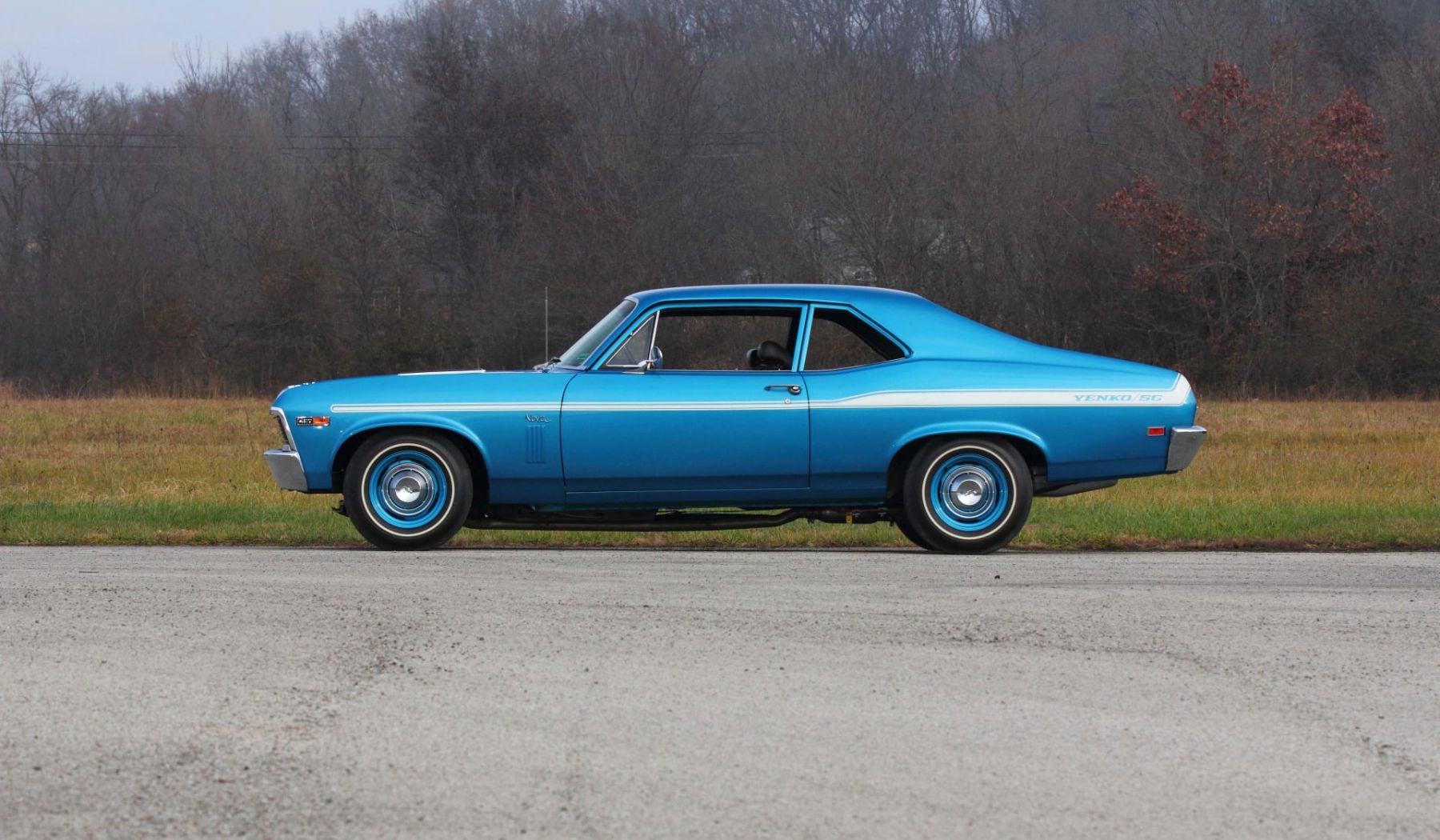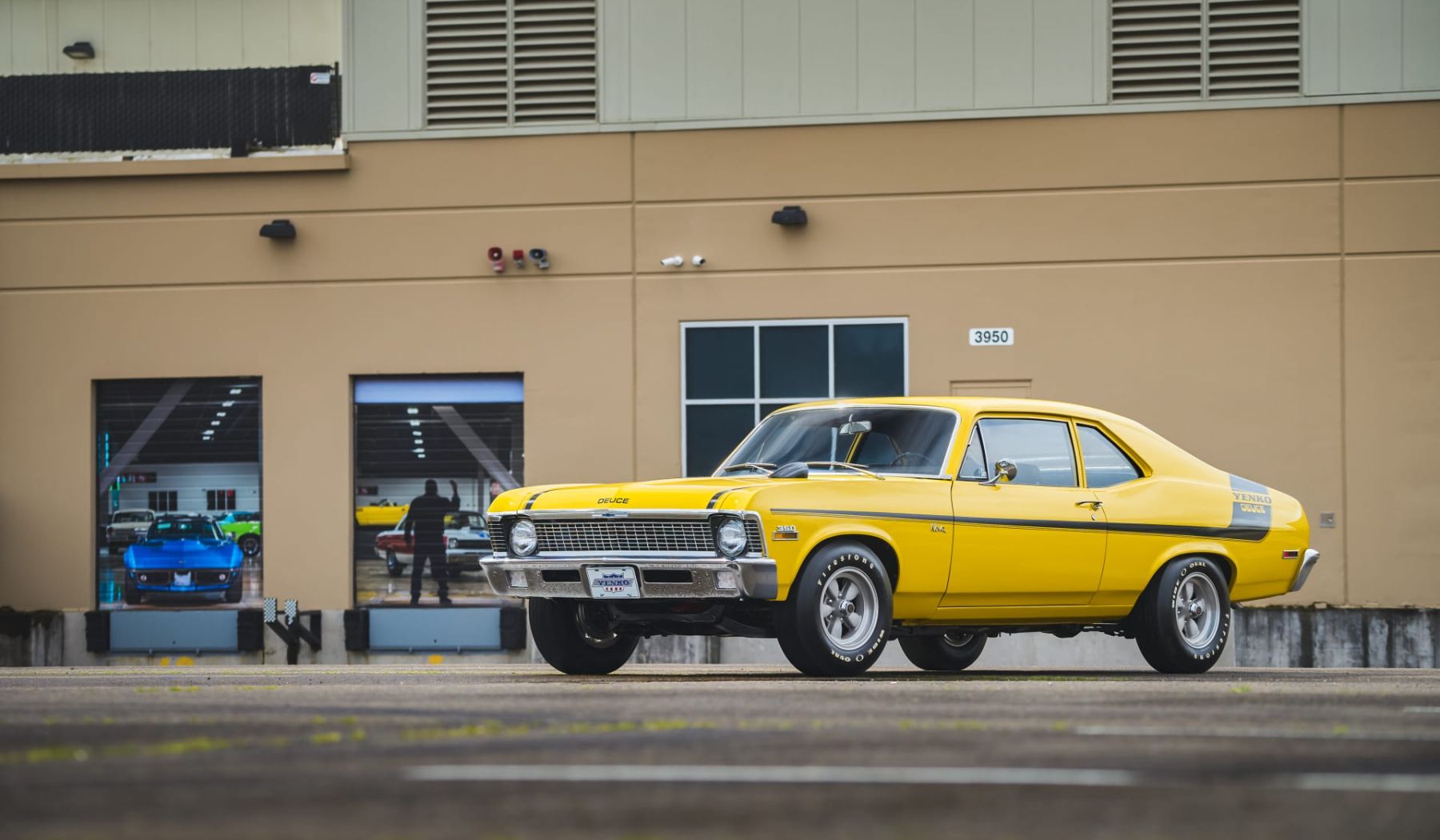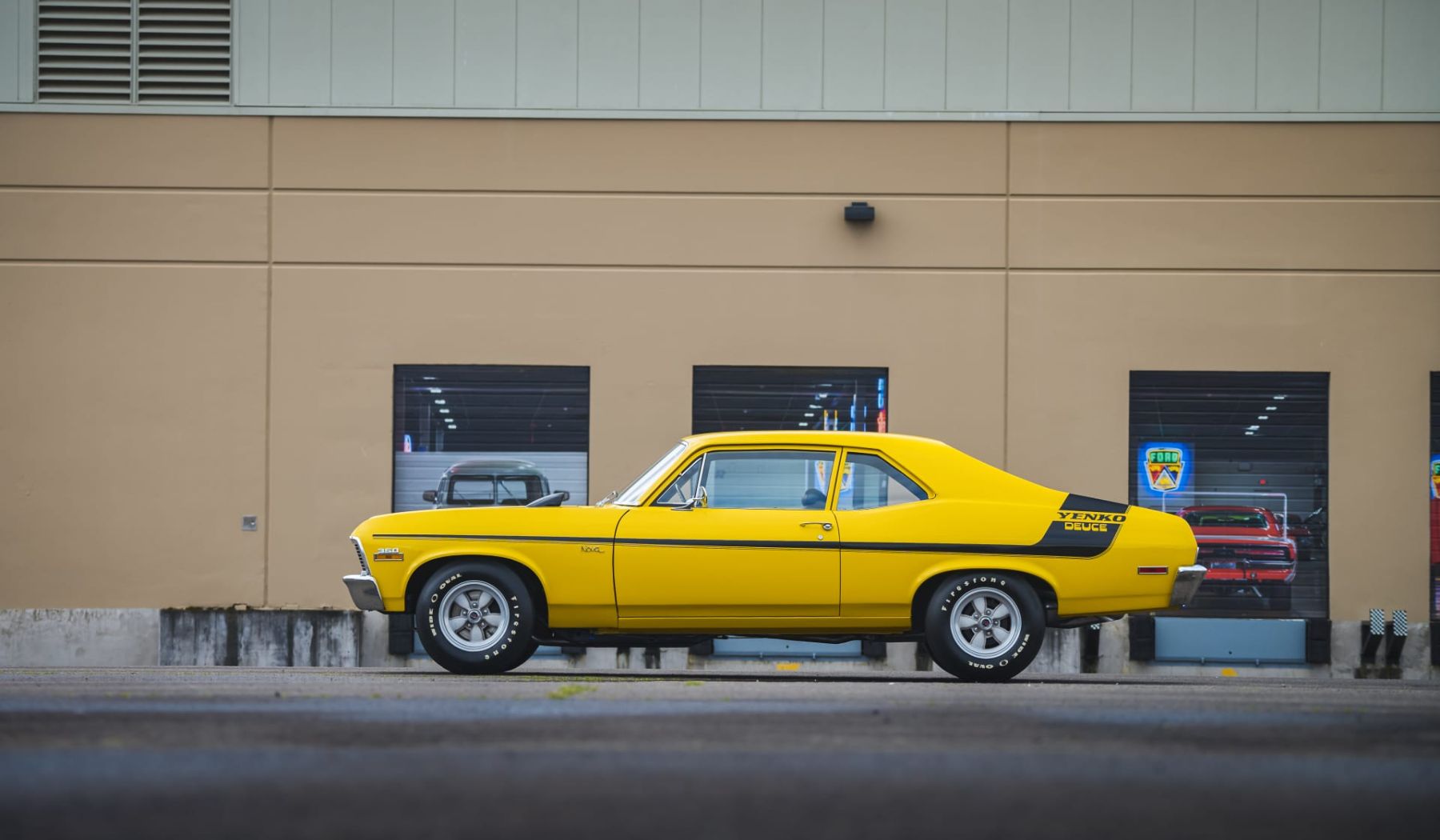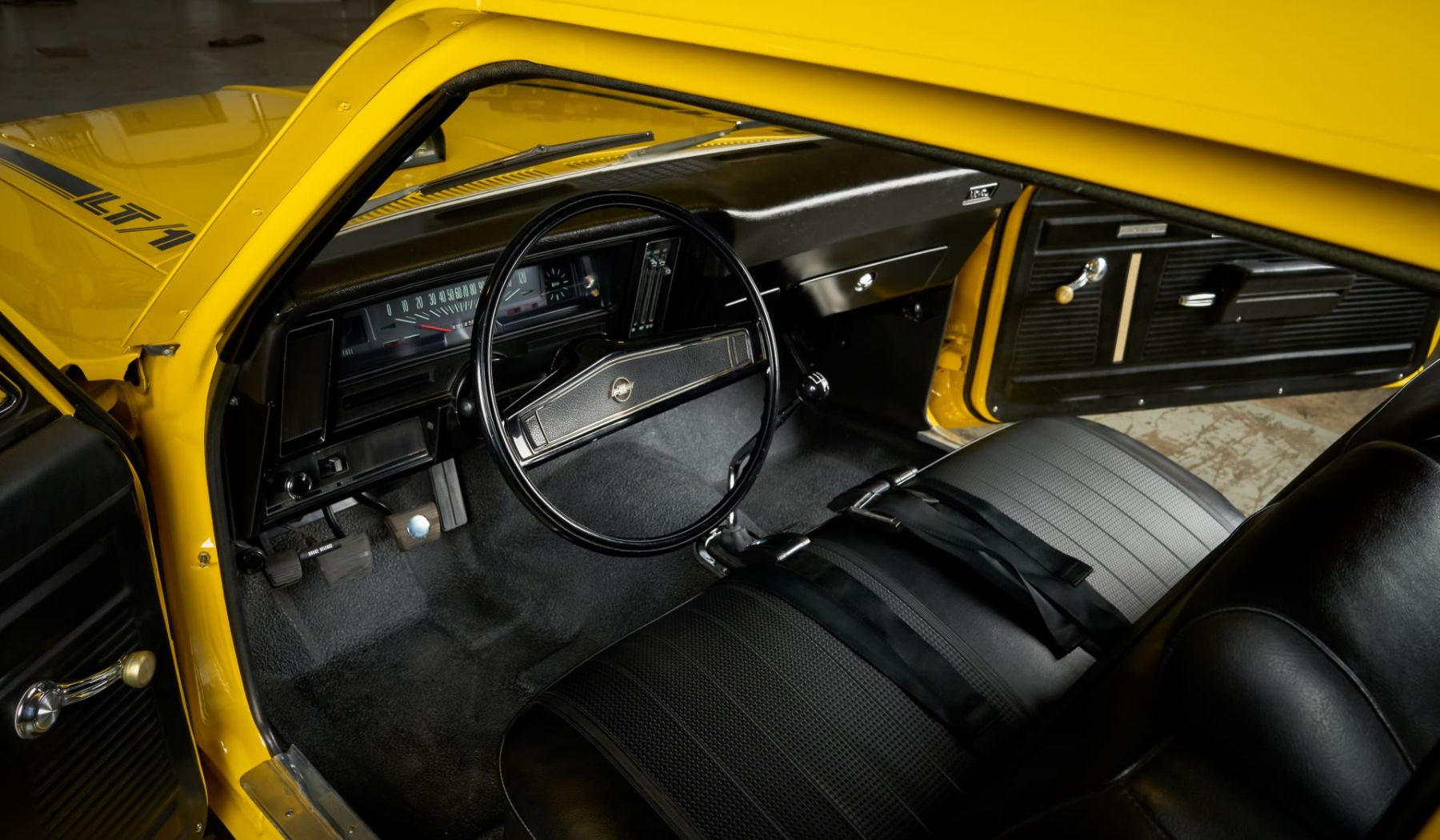Super Novas: A Look Back at Yenko's Insane Mini-Muscle Cars
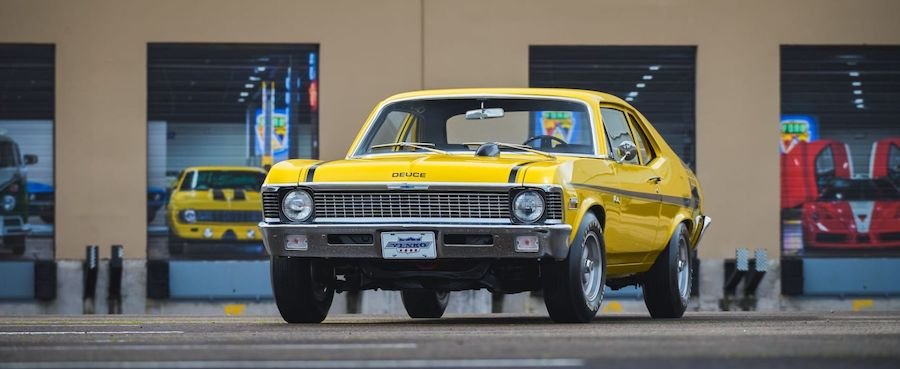
After the first generation of the rear-engined Corvair failed to stop the Ford Falcon's dominance in the compact segment, Chevrolet went back to the drawing board and came up with a new model.
Christened Chevy II, the new-for-1962 compact was marketed alongside the Corvair as a cheaper, more conventional front engine/RWD alternative, and it proved successful from the get-go, promoting Chevrolet to continue refining it for the next three years.
For 1966, the body was thoroughly restyled, giving birth to the second generation. Then, in the 1968 model year, the Chevy II received a complete makeover, and a year later, it was renamed "Nova" after its former top-of-the-range trim.
Since 1963, the compact has been available with a performance-oriented trim called SS (Super Sport), but unlike the SS packages of larger Chevys, it only adds visual upgrades.
That changed in 1968 when the Nova's SS trim morphed into a full-blown performance package that, apart from the distinct visual features, upgraded the car's suspension, added a standard 295-hp, 350-ci (5.7-liter) small-block, or two versions of the 396-ci (6.5-liter) big-block rated at either 350 or 375 hp.
The 396-equipped Nova SS was now a bonafide factory-built muscle car capable of impressive performance, but for the 1969 model year, it was no longer the most potent Nova that one could buy, as Don Yenko decided to try some COPO magic on Chevy's redesigned compact.
The birth of the Yenko SYC 427 Nova
Based in Canonsburg, Pennsylvania, Yenko Chevrolet was the East Cost Mecca of Chevy performance during the late 1960s.
Though the dealership was founded in 1949, it became famous thanks to Don Yenko, who took its reigns for his father in 1957 and began modifying various Chevy.
By 1966, Don Yenko, who, apart from running the business, was also heavily involved in racing, created an SCCA D Production class Corvair-based homologation special dubbed Stinger.
Then, in 1967, when the Camaro became available, Yenko produced his greatest hit: the 427-ci (7.0-liter) L72-powered Yenko Camaro.
By 1969, Yenko Jr. was producing the most lethal versions of the Camaro and Chevelle through the keen usage of the Central Office Production Order (COPO) system. But, he didn't settle for the L72-powered Camaro and Chevelles, adding the Nova to his list of tire-shredding SYCs (Yenko Super Cars).
Outrageous performance crammed into a lethal compact package
Unlike the SYC Camaros and Chevelles, which were ordered with 427s through the COPO system, the Super Novas started life as factory-built 375-hp 396 SS cars, which were converted into SYCs at Yenko's shop.
After the factory engine was gutted out, each car received either an 11.0:1-compression L72 427 equipped with cast-iron SS 396-spec cylinder heads, an aluminum intake manifold, a 780-cfm Holley four-barrel carburetor, and, last but not least, an AC Delco single-point ignition.
Connected to a Muncie M21 four-speed manual and a 12-bolt Positraction rear, the Yenko-tuned L72s were rated at 450 hp, a 25 hp increase over the 427's stock rating, but this figure was purposefully underrated to keep insurance rates low. In reality, the true output potential of the engine stood closer to 500 hp.
With all that raw power on tap, the Super Nova was allegedly capable of sprinting to 60 mph (97 kph) from a standstill in the 5.5 to 6-second range. Though technically street legal, the car was tailored for the drag strip and, although it also received a beefed up suspension system, wider wheels, and was available with larger power front disc brakes, it required a lot of experience and a healthy dose of insanity to push to the limits.
As Yenko himself stated years later, the 1969 SYC Nova "was the wildest thing we ever did." Many criticized the rabid Nova for being way too dangerous and even lethal in the wrong hands, but in the end, those who brought one of the 37 units built (38, if we count an automatic-equipped prototype) lived to tell the story of their insane supercar.
Followed up by the 1970 Yenko Deuce
The 1969 Super Nova was epic in terms of performance, but there was one big problem: many insurance companies refused to insure the rabid model.
For the 1970 model year, rising insurance premiums forced Yenko to rethink his Nova program. Thankfully, rather than canceling it altogether as he did with the Camaro and Chevelle SYCs, the COPO King worked his magic and created another compact muscle car icon.
Dubbed Yenko Deuce, the new Super Nova wasn't as outrageous as its predecessor. However, it still packed all the high-performance hardware to make it a legitimate Yenko Super Car.
Aesthetically, it received the same hood-mounted tach as the 1969 SYC Nova, Yenko badging, and although redesigned, the unique stripe package made it clear that this wasn't your average grocery-getting Nova.
Switching to a high-performance small-block V8
With using the 427 out of the question, Yenko used the COPO system to order Novas equipped with the new LT-1 350-ci (5.7-liter) small-block V8, which was only available in the 1970 Corvette and Camaro Z28.
Equipped with four-bolt main caps, solid lifters, forged pistons, the "178" high-performance cam, and a 780-cfm Holley four-barrel carb that sat atop an aluminum high-rise intake, the LT-1 was rated at 360 hp (Camaro Z28) or 370 hp (Corvette), making it the most powerful factory-built small-block V8 available at the time.
The Deuce could be had with either a Muncie four-speed manual or a Turbo 400 automatic, while the standard equipment also included a 12-bolt 4.10:1 Posi rear and the complete F41 sport suspension.
Lighter and nimbler than the most potent Nova SS
Although the big-block L78-equipped Nova SS had a higher output rating (375 hp), the Yenko Deuce had a weight advantage because of the LT-1 small block.
This led to improved handling, which made the Deauce surprisingly well-mannered through tight turns.
That being said, for those who wanted HEMI-slaying straight-line performance, the LT-1 provided an excellent tuning platform. Many enthusiasts managed to turn their Deauces into 13-second (over a quarter mile) cars by only adding aftermarket headers and a set of slicks.
In the end, the Deuce proved a lot more powerful than the initial 1969 Super Nova. Don Yenko initially ordered 125 units through the COPO system. Unsurprisingly, the small block-powered Super Novas sold like hotcakes, so Yenko placed a second order for an additional 25 units.
The Yenko Super Novas today
Today, Yenko is synonymous with the most potent Camaros built during the golden age of muscle. Few remember the Yenko Chevelles, and even fewer remember the Yenko Novas.
Nevertheless, the few surviving Super Novas are among the most expensive classic muscle cars on the collector's market.
Knowledgeable collectors are willing to pay huge figures to own one. The rarer 1969 SYC Nova, of which only around ten examples are accounted for today, is, of course, the most sought-after.
Back in 2015, the surviving example shown above was auctioned off by Mecum, and it fetched a whopping $418,000.
More recently (2023), the same auctioneer placed a 1970 Deuce under the hammer at an event held in Dallas, TX, and the winning bid reached $112,750.
While they weren't as popular as the Camaros, Yenko's Super Novas were unquestionably some of the most insane high-performance compacts ever built, and they deserve to be remembered by the younger generations of muscle car enthusiasts.
For a virtual tour of these fascinating rides, we recommend watching the YouTube videos below by Two Guys and a Ride and the American Muscle Car Museum.
